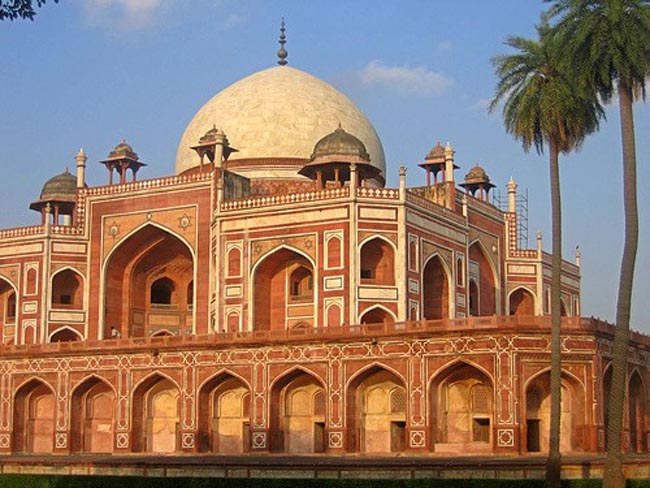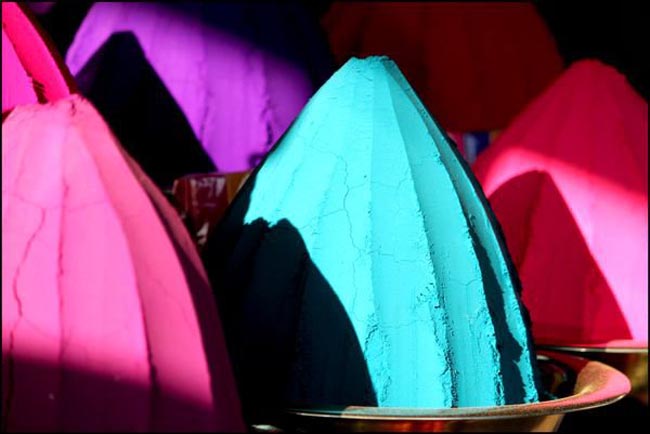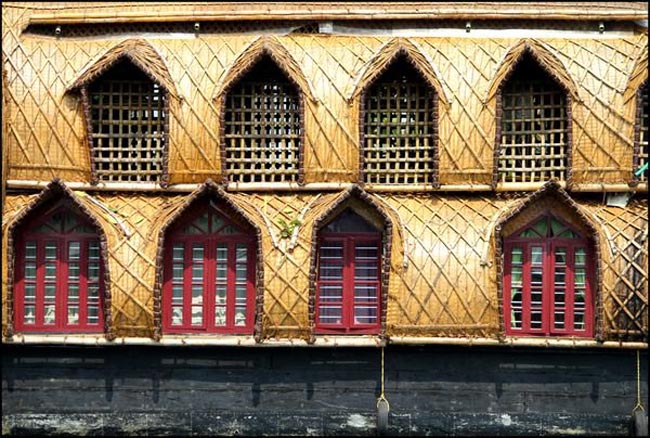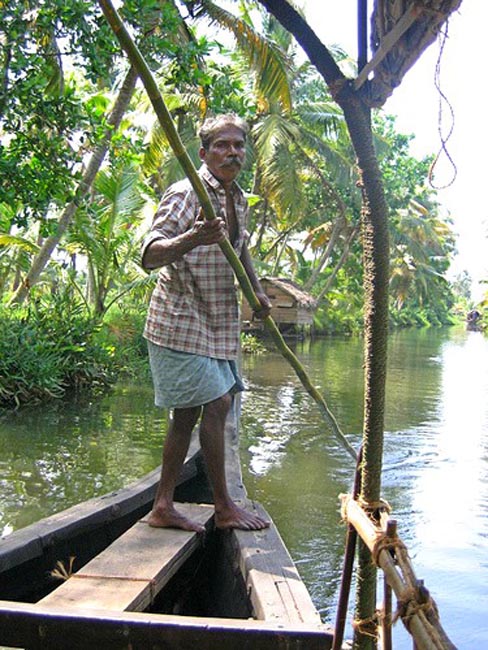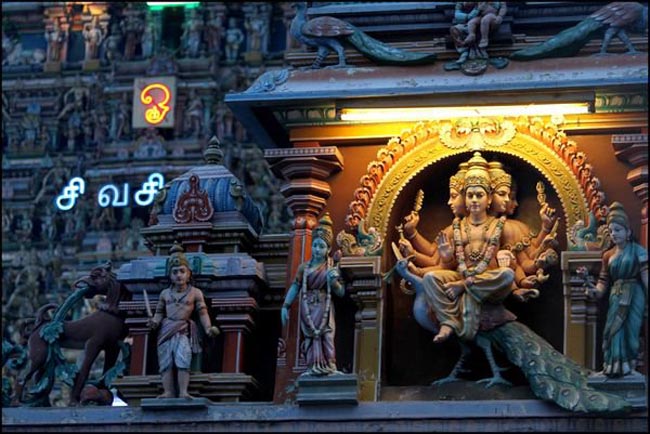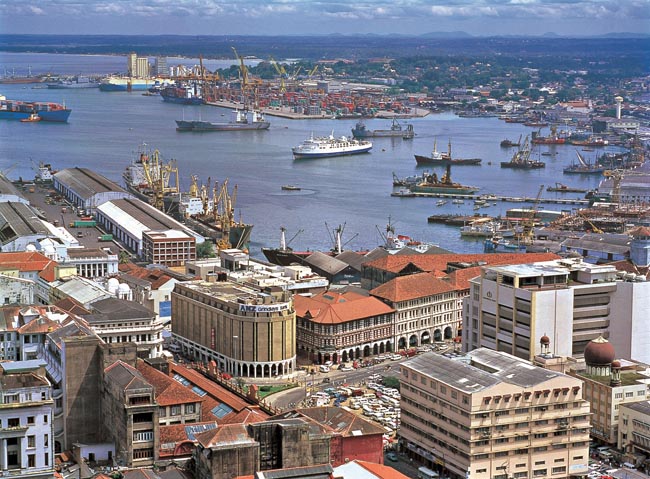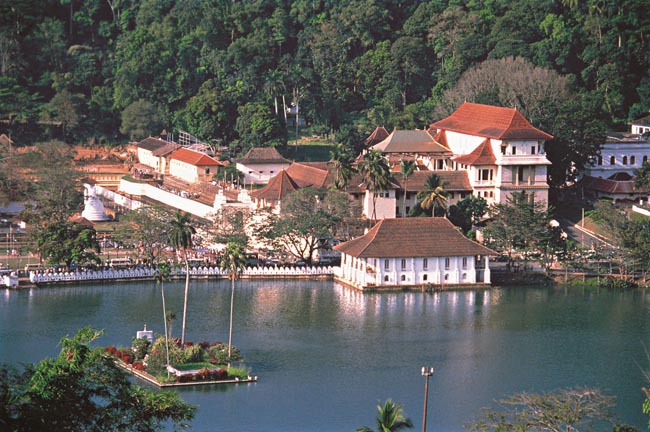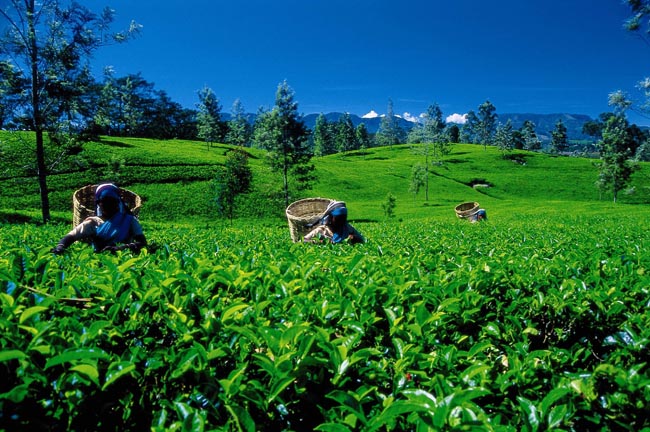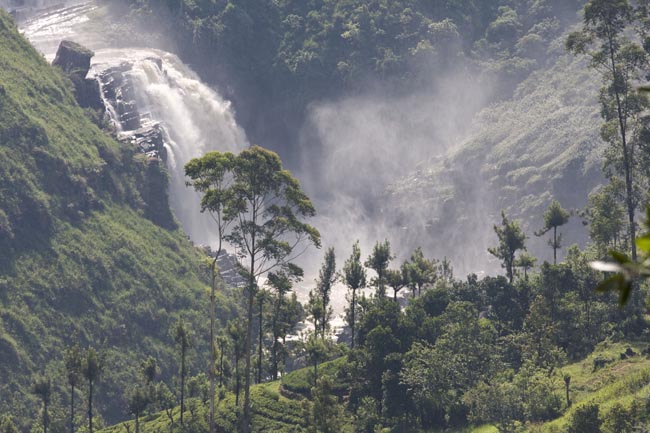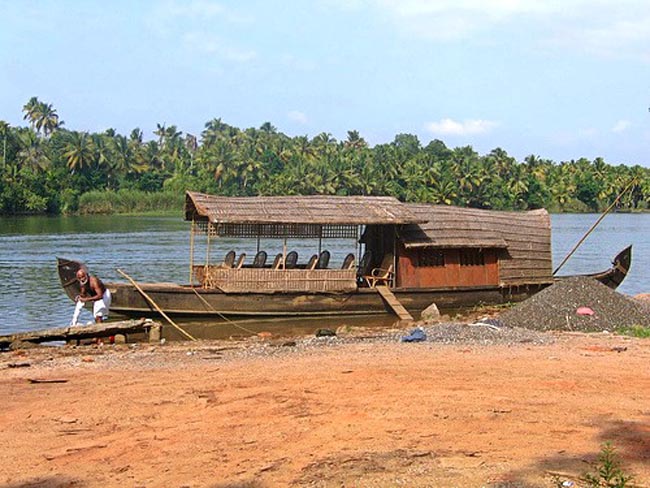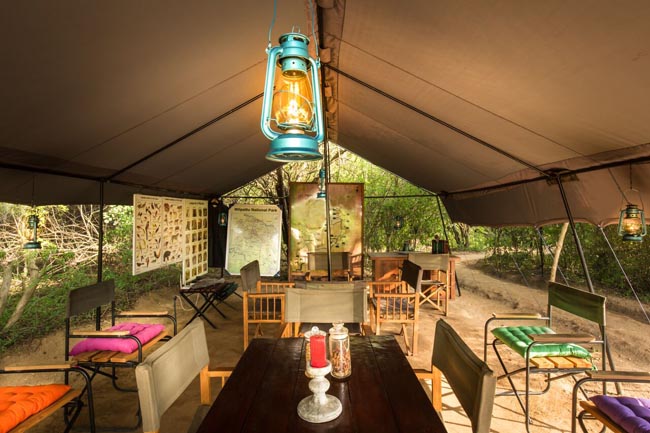Prices below are per person, twin-sharing costs in US Dollars (USD). Pricing does not include airfare to/from the tour and any applicable taxes. For single supplement rates and taxes (if any), please refer to below Prices & Dates table. For general information on flights to/from the tour, click here.
Your Travel and Accommodation Arranged For You
Tips Included for Driver, Restaurant Staff, Local Guides
Authentic Local Experiences With Lots Of Inclusions.
Select a date below to reserve your spot:
The above prices are subject to an additional $320 for taxes/fees levied on flights that occur as part of the tour. The internal airfares ARE included (any exceptions are listed in red below), but we list the taxes separately on your invoice as they are beyond our control and can change at any time.
Optional Single Supplement: $1630 USD (number of singles limited).
This tour may require a mandatory single supplement charge of $810 if you join our share program and we are unable to pair you.
Download Itinerary
Day 1 Arrival in Delhi
Arrive in Delhi and transfer to our hotel.
Welcome to India! Anyone visiting the country will be enthralled by its natural beauty, cultural diversity, ancient history and its incredible people. Visitors come to India for its wealth of sights, cultural exuberance, diversity of terrain, and in search of that special something, an extra punch that only India promises and delivers.
Overnight in Delhi.
Included Meal(s): Dinner
Day 2 Delhi: City Tour
Today we have a full-day tour of Delhi.* We start with a drive north into Old Delhi, passing along the Rajpath (King's Way) and stopping for photos at the India Gate. The 42m high India Gate, an "Arc de Triomphe"-like archway in the middle of a crossroad, commemorates the Indian soldiers who lost their lives fighting for the British Army during WWI. This landmark also bears the names of British and Indian soldiers killed in the Northwestern frontier in the Afghan War of 1919.
Next we will make a visit to the Jamma Mosque. Located in the heart of Old Delhi, the largest mosque in India can accommodate as many as twenty-thousand worshippers. This imposing architectural monument, with it's three gateways and two minarets, took fourteen years to complete (1644-58). Time permitting we will enter to have a brief look inside.
From here we board our cycle rickshaws for a tour of Chandni Chowk (Silver Street). Here we are given a glimpse into an old world lifestyle slowly fading from Delhi. The hustle and bustle of everyday life can be felt in the Chandi Chowk's narrow lanes. We will reboard our bus after the rickshaw ride, going past the Red Fort (photo stop), and we disembark at the Raj Ghat, set within a beautiful park. This national monument is where the father of the nation, Mahatma Gandhi, was cremated.
After a stop for lunch we continue our sightseeing with a visit to Humayan's Tomb, an excellent example of Mughal architecture, predating the Taj Mahal by almost 100 years. Persian in style, this is a beautiful red sandstone building inlaid with black and white marble.
We will finish our day with a visit to the Qutub Minar. Few other monuments are as closely identified with Delhi as the Qutub Minar, this first monument of Muslim rule in India. It heralded the beginning of a new style of art and architecture which came to be know as the Indo-Islamic.
Overnight in Delhi.
Included Meal(s): Breakfast and Dinner
Not finding what you're looking for?
Our specialists can take away the stress and create a private custom tour tailored to your exact interests and budget.
Day 3 Delhi - Gwalior
After an early breakfast at the hotel, transfer to the Railway Station to board the Shatabdi Express train to Gwalior. We are met on arrival and transfer to the hotel.
This afternoon we visit the Gwalior Fort.* The fort's walls and buildings were constructed by different generations of rulers. The most notable are the Suraj Kund, a tank built in the 8th century AD, two 11th century temples known as Sas Bahu ka Mandir, dedicated to Vishnu; the 16th century Gujri Mahal Palace and the Hindola Gate, which houses a small archeological museum. Later visit Jai Vilas Palace and Museum, located in the city. The enormous Jai Vilas Palace, built in the 19th century, has a pair of the world's heaviest chandeliers in the Durbar Hall and a crystal staircase. The dining table is fitted with an electric train made of silver, which carried brandy and cigars around the table after dinner.
* The start time of today's tour may depend on the arrival of your Tour Leader and other group members arriving from Agra on a longer tour option.
Overnight in Gwalior.
Included Meal(s): Breakfast and Dinner
Day 4 Gwalior - Khajuraho
Today we travel by road to Khajuraho where we will tour its western group of temples. Built between 950 and 1050 AD, they are among the most creative examples of Indian architecture. Only 22 of the original 85 temples survive today. The most popular theme is woman: reflective, playful, and amorous. The carvings also depict gods in cosmic evolution, griffins, nymphs, beasts, demons in revolt and the several emotions of man -- fear, doubt, jealousy, ardent love and consummate passion.
The western group, contained within a fenced enclosure, is well-maintained as a park. The large Lakshmana Temple is dedicated to Vishnu and is one of the earliest of the western enclosure temples, dating from 930-950 AD. It is also one of the best preserved, with a full five-part floor plan and four subsidiary shrines. The Vahara Temple, dedicated to Vishnu's boar incarnation (Vahara avatar) faces the Matangesvara Temple and has a huge solid and intricately carved figure of the boar incarnation, dating from around 900 AD. The Kandariya Mahadev Temple is not only the largest but also artistically and architecturally the most perfect. Build between 1025 and 1050 AD; it represents Chandela at its finest. The Mahadeva Temple is small and mainly ruined. However, it houses one of Khajuraho’s best sculptures -- a fine sardula figure caressing a lion. The Devi Jagadamba Temple was probably originally dedicated to Vishnu, but later changed to Parvati and then Kali. The Chitragupta Temple is unique in being dedicated to the Sun God, Surya. The Matangesvara Temple, standing next to the Lakshmana Temple, is not within the fenced enclose, because it is still in everyday use, unlike all the old temples.
We continue by road to Khajuraho.
Overnight in Khajuraho.
Included Meal(s): Breakfast, Lunch and Dinner
Day 5 Khajuraho Touring - Fly to Varanasi
This morning we will visit the eastern group of temples before flying to Varanasi (if time permits).
Varanasi is the religious capital of the Hindu faith since the dawn of history. Known as Kashi in the 7th century BC it constitutes a microcosm of Indian life. No one knows how old it really is – when Buddha came here in 550B, it was already a flourishing ancient settlement. Varanasi is the oldest living city in the world and the epicentre of Hinduism and Indian culture.
On arrival we will check into our hotel and later in the evening, watch the spectacular aarti (religious ceremony) when thousands of butter lamps are lit and set afloat on the sacred Ganges. It commences with the blowing of a conch shell and continues with the waving of incense sticks in elaborate patterns and circling of large flaming lamps. The movement of the lamps, held in the pandits hands, is tightly synchronizing to the rhythmic chants of hymns and clang of cymbals. The heady scent of sandalwood thickly permeates the air.
Overnight in Varanasi.
Included Meal(s): Breakfast and Dinner
Day 6 Varanasi Touring
Before sunrise we take a boat ride on the sacred Ganges River, where devout Hindus can be seen performing their daily ablutions. The bathing ghats, over 5 km in length, lead down from a steep bank to the river, are the soul of the city. Return to the hotel for breakfast.
Later we walk through an inextricable maze of small streets and alleyways, hiding in disorderly array no less than 2,000 temples and shrines. Domes, pinnacles, towers and derelict 18th-century palaces dominate the left bank of the Ganges River. The streets are noisy, colour is rife. Visit some of the more important temples such as the Bharat Mata Mandir and the Durga Temple. Go past the beautiful Tulsi Manas temple. Take a walk down Vishwanathji Ki Gali -- the ancient alley which is home to some beautiful temples. Here you will find shops that sell every conceivable item required in a temple.
This afternoon we visit Sarnath. Located 9 km from Varanasi, it the centre of the Buddhist world, just as Varanasi is that for the Hindu. It was here that Buddha preached his first sermon, partially recorded on one of its stones. Dhamek Stupa dating back to 500 AD, is the largest with geometrical ornaments on its wall. Dharmarajika Stupa was set up by emperor Ashoka to contain the bodily relics of the Buddha.
Overnight in Varanasi.
Included Meal(s): Breakfast and Dinner
Day 7 Varanasi - Fly to Goa
Today we fly to the former Portuguese enclave of Goa.
Goa achieved fame when Portuguese navigator Vasco da Gama sailed down the Malabar Coast in 1498 in search of "Christians and spices." Although he found neither, Goa became a Portuguese colony separated from the rest of India by the jungle covered hills of the Western Ghats. Goa's heartland and population is located in the alluvial strip inland from the beaches, a lush patchwork of paddy fields, coconut plantations, whitewashed churches and gently meandering rivers.
Our hotel is not located on the beach in Goa as we prefer to stay inland in order to concentrate on the cultural heritage of the area. We will, however, have free time during which you can experience the beach/es for which the region is famous.
Overnight in Goa.
Included Meal(s): Breakfast and Dinner
Day 8 Goa Area Touring
Goa is a tiny part of India on the west coast. This small state is one of India's most popular attractions -- a land of more than 26 wonderful beaches, natural springs known for their medicinal powers, green hills, a huge collection of historic temples and churches, lush fields of vegetables and grains, plus kind hearted and very hospitable people with a rich cultural milieu.
This morning we include a sightseeing tour of Panjim. a former fishing village made the capital of Goa by a decree from Lisbon. The Goan capital has a different feel from any other Indian city. Stacked around the side of lush terraced hillsides at the mouth of the Mandovi River, its skyline of sloping red-tiled roofs, whitewashed churches and concrete apartment blocks, the essence of the city, purely based on Portuguese architectural style, is distinctively seen all around. It is spread around Altinho, a residential area with Portuguese style bungalows. The dominant structure is the Patriarch's Palace with the statue of Christ the King on its lawns. The Idalcao (Adil Shah's palace), built in 1490, is the oldest monument in Panjim. The Church of Our Lady of Immaculate Conceptions offers the best views of the city.
Driving through the historic neighbourhood of Fontainhas, known as the Latin Quarter, past old, colourful villas. We will pause at the small St Sebastian Chapel to view several statues of historical figures including the Roman Catholic monk Abade Faria.
Our tour also takes us to Old Goa, the heartland of Asian Christianity, once a bustling metropolis but is now in ruins. Old Goa, called “Rome of the East,” bounds in churches and chapels, some dating back to the 16th century. The profusion and architectural excellence of churches include superb examples of late renaissance, early baroque, Manueline and Gothic. Visit some of the most popular and the best-known churches and cathedrals in Old Goa.
At some point in our day, we’ll enjoy lunch at Sahakari Spice Farm, an award -inning spice plantation set amidst lush green surroundings. A guide takes us around the farm, explaining the usefulness of the spices, tropical fruits, herbs and roots grown here, such as cashew, Areca nut (betel nut), and tropical fruit like star fruit, jackfruit, custard apple, banana, papaya and pineapple. After the tour, we are served an exquisite Goan lunch in traditional style.
Balance of the day at leisure to enjoy this laid-back town.
Overnight in Goa.
Included Meal(s): Breakfast, Lunch and Dinner
Day 9 Goa: Heritage Tour
This morning we visit several sleepy villages, stepping back in time to get a glimpse of the historic remnants of the Portuguese era.
Our first stop is the little village of Loutolim. Built in 1590, it pre-dates the Taj Mahal by decades. It was designed by Jesuit priests from nearby Rachol Seminary to accommodate a newly-converted Goan family -- the Podiars, who took the name Figueiredo. The house's sumptuous interior stands in studied contrast to the natural beauty of the paddy fields and coconut trees that surround it. In the 18th century, with the family's rise in power, the house was suitably augmented to achieve its current proportions.
We continue to the village of Chador to visit another heritage mansion, the Menzes Braganza Mansion, the biggest Portuguese mansion of its kind in Goa. Built in the 17th century and stretching along one whole side of Chandor's village square, it is the best example of what Goa’s once-grand and glorious mansions have today become.
Finally, the Palácio do Deão, a 250 year old mansion built by a Portuguese nobleman, features some outstanding lush gardens, which have been known as the most beautiful pleasure gardens in Goa.
We enjoy a traditional lunch at Palácio do Deão, where you can savour Goan delicacies. Goan cuisine originated from its ancient Hindu roots, but was influenced by the 451 years of Portuguese colonialisation and the century of Muslim rule. As Goa is located in a tropical zone, the spices and flavours are intense.
The remainder of the day is yours to explore further, do some shopping, and/or enjoy one of the area's many beaches. Owing to the open-ended nature of our day and included lunch, we leave dinner to your own account today.
Overnight in Goa.
Included Meal(s): Breakfast and Lunch
Day 10 Goa - Badami
Today, we embark on a scenic road trip to the historic town of Badami. After a full day of travel, we arrive in Badami and immediately set out to explore its magnificent rock-cut temples.
These ancient temples, carved out of solid sandstone cliffs, are adorned with intricate sculptures depicting Hindu deities such as Shiva, Vishnu, and Durga. The Durga Temple, in particular, is renowned for its fusion of southern and northern architectural styles.
Depending on our arrival time, we may continue our exploration of Badami's historical sites the following morning.
Overnight in Badami.
Included Meal(s): Breakfast and Dinner
Day 11 Badami - Aihole - Patadakkal - Hospet
We travel by road to Hospet.
We make a stop at Aihole. The seventy temples at Aihole exemplify Hindu medieval art. The Durga temple with its pyramidal roof has some remarkable sculpture, and the Jain Meguti temple is composed of 630 small stone blocks.
We also visit Patadakkal, the place where the Chalukuan kings had their coronation ceremonies. The ceiling of the Papanath temple, built around 680 AD, has a carved smiling Shiva, appearing to bless with his outstretched palm from whatever direction he is viewed. The Virupaksha Temple is a curious figure -- an elephant on one side and a buffalo on the other.
Continue to Hospet.
Overnight in Hospet.
Included Meal(s): Breakfast and Dinner
Day 12 Hospet - Hampi - Hospet
After breakfast we depart for a day trip to Hampi, the seat of the famed Vijayanagara Empire, which was the capital of the largest empire in post-Mughal India, covering several states. Although in ruins today, this capital city once boasted riches known far beyond the shores of India. The ruins of Hampi of the 14th Century lies scattered in about 26 sq. km area, amidst giant boulders and vegetation. Protected by the tempestuous river Tungabhadra in the north and rocky granite ridges on the other three sides, the ruins silently narrate the story of grandeur splendour and fabulous wealth. The splendid remains of palaces and gateways of the broken city tell a tale of man's infinite talent and power of creativity together with his capacity for senseless destruction.
Return to Hospet.
Overnight in Hospet.
Included Meal(s): Breakfast and Dinner
Day 13 Hospet - Hassan
After an early breakfast, depart on the long (+/- 7 hours) but interesting drive through rural Karnataka to Hassan. Upon arrival check-in at the hotel.
Overnight in Hassan.
Included Meal(s): Breakfast and Dinner
Day 14 Hassan: Belur & Halebid
Today we visit Belur and Halebid.
Belur and Halebid were both capitals of The Medieval Hoysala kings who built the exquisitely carved temples in the 12th & 13th centuries. Belur is famous for it Hoysala architecture; its Temple of Lord Channakeshava is embellished with carving which has few equals in the world. It took 103 years to complete and you can see why. The facade of the temple is filled with intricate sculptures and friezes with no portion left blank: elephants, episodes from the epics, and sensuous dancers.
Halebid was the seat of Hoysala Kingdom; its great Hoyaleswara Temple was built in the typical Hoysala style. The temple, dating back to the 12th century, is astounding for its wealth of sculptural details. The walls of the temple are covered with an endless variety of gods and goddesses, animals, birds and dancing girls. Yet no two facets of the temple are the same. This magnificent temple -- guarded by a Nandi Bull -- was never completed, despite 86 years of labour.
We return to Hassan.
Overnight in Hassan.
Included Meal(s): Breakfast and Dinner
Day 15 Hassan - Mysore
This morning we travel to Mysore, arriving around midday.
In the afternoon we explore Mysore, famous for its silk and sandalwood, as well as its numerous palaces, well laid out boulevards and beautiful parks. The Maharaja's Palace is the most impressive of Mysore's ochre-coloured buildings -- a modern edifice built in 1897, where the oriental decorative imagination runs wild. One of the largest palaces in India, it is a gigantic synthesis of Hindu and Muslim styles. The royal family's private chambers, including the impressive Durbar Hall, are open to the public. The Marriage Hall has life-like paintings of the Dassera procession and in the museum is the ruler's golden elephant throne, used during festivities. Chamundi Hill lies 10 km from Mysore and is named after Chanduswari, the consort of Lord Shiva and the patron goddess of the royal family of Mysore. On the way up is a colossal figure of Nandi, carved out of a single rock in 1659. The view from the top of the hill is superb.
Overnight in Mysore.
Included Meal(s): Breakfast and Dinner
Day 16 Mysore - Bangalore: City Tour
Today we travel by road to Bangalore, the cosmopolitan capital of Karnataka.
Bangalore is called the Garden City for it's delicate blossoms and greenery that impart a unique beauty to this lovely city. The weather is the city's best feature, with pleasant summers and bearable winters. Bangalore, which literally means the 'town of baked beans', was founded by Kempe Gowda, a chieftain of the Vijayanagar Empire, around the 16th century. He built four towers in four directions to specify its boundaries.
On arrival we tour Bangalore, visiting the Lal Bagh Botanical Gardens, which has a variety of old trees, fountains, lotus pools, terraces and an assortment of tropical herbs and subtropical herbs. We also see the government buildings.
Overnight in Bangalore.
Included Meal(s): Breakfast and Dinner
Day 17 Bangalore - Fly to Kochi - Allaphuza: Houseboat
Early this morning we fly to Kochi (Cochin).
We continue by road to Alappuzha (Alleppey), known as the "Venice of the East", situated on Vembanad Lake, the longest in India. A maze of canals and a network of bridges give this busy commercial town its descriptive sobriquet. Alleppey is known for its coir, the retted fibre of the coconut husk and for black pepper.
Today we board our houseboat for a very special Kerala delight -- a slow boat through its forests and palm-shaded canals. We take a leisurely cruise on the beautiful backwaters, enjoying the magnificent scenery along the waterways and stopping to admire what history and religion have left along the way.
THE HOUSEBOAT will be approx 60 feet long and 13 feet wide in the middle. There are comfortable beds, and traditional lanterns, and air-conditioning. There will be a sundeck for daytime relaxation. The boats are made of local natural fibres that truly echo the villagers harmony with the natural surroundings. As your oarsman slowly and silently propels us along the backwaters, we will enjoy the magnificent scenery along the waterways. We will stop to view working villages and witness locals fishing, swimming, crafting, and bathing (most boats will have oarsman though some will be motorized with a silencer on the motor).
NOTE: Single cabins are NOT available on the houseboat. Single supplements reflect sharing for this one night.
Overnight Kerala Houseboat.
Included Meal(s): Breakfast, Lunch and Dinner
Day 18 Return to Kochi: City Tour
Today we return to Kochi.
The history of European involvement in Kochi, from the early sixteenth century onwards, is dominated by the aggression of, successively, the Portuguese, Dutch and British, competing in their desire to control the port and its lucrative spice trade. From 1800, the state of Cochin was part of the British Madras Presidency; from 1812 until Independence in 1947, its administration was made the responsibility of a series of diwans, or financial ministers. In the 1920s, the British expanded the port to make it suitable for modern ocean-going ships; extensive dredging created Willingdon Island, between Ernakulam and Fort Cochin.
On arrival we have a tour of Kochi, including: Chinese fishing Nets -- A legacy of one of the earliest visitors to the Malabar coast, these nets are unmistakable as one enters the harbour. Records show that they were first erected between AD 1350 and 1450. Constructed out of Teak wood and Bamboo poles, they work on the principle of balance. The best place to watch is from Vasco Da Gama square, a narrow promenade that parallels the beach with little stalls that serve fresh seafood, tender coconuts and so on.
Santa Cruz Basilica: Built by the Portuguese, the church was elevated to a Cathedral by the Pope Paul IV in 1558. Spared by the Dutch conqueror of Cochin who destroyed many Catholic buildings in 1663, it later fell into the hands of the British who demolished it when they took over Cochin in 1795. For almost 100 years there was no church on the site, until the Bishop Dom Gomez Vereira commissioned a new building in 1887.
Overnight in Kochi.
Included Meal(s): Breakfast and Dinner
Day 19 Kochi - Fly to Chennai: City Touring
Today we fly to Chennai (Madras).
Chennai, the capital of Tamil Nadu, is, like Mumbai and Calcutta, a comparatively modern creation. It was founded by the British East India Company in 1639, on a narrow five-kilometre strip of land between the Cooum and Adyar rivers, a few kilometres north of the ancient Tamil port of Mylapore and the Portuguese settlement of San Thome, established in 1522. The British were repeatedly challenged by the French who, in 1746, destroyed much of the city.
Robert Clive ("Clive of India"), then a clerk, was taken prisoner, an experience said to have inspired him to become a campaigner. Clive was among the first to re-enter Chennai when it was retaken three years alter, and continued to use it as his base. Following this, fortifications were strengthened and the British survived a year-long French siege (1759), completing the work in 1783. By this time, however, Calcutta was in the ascendancy and Madras lost its national importance.
We will visit Fort St George, once a stronghold of the British; St Mary's Church, the oldest Anglican church in India; the San Thome Cathedral where the remains of St Thomas the Apostle are believed to have been buried; the Mylapore Temple dedicated to Lord Shiva and the Light House which is the only one of its kind in the world to be located on top of a High Court. We drive along the Marina, the thirteen kilometre-long beach which, with its shining white sands, aqua blue sea and violet lights at night, is the pride of Chennai.
Overnight in Chennai.
Included Meal(s): Breakfast and Dinner
Day 20 Chennai & Mahabalipuram
Today, we embark on a scenic drive of approximately 60 kilometers to Mahabalipuram, a coastal town steeped in history. This ancient seaport, once a thriving center of the Pallava dynasty, is renowned for its stunning rock-cut temples and intricate sculptures dating back to the 7th century.
The temples of Mahabalipuram are unique for their simplicity and their depiction of everyday life, offering a fascinating glimpse into the culture and society of the Pallava era. We'll explore these architectural marvels, marveling at the skill and artistry of the ancient craftsmen.
After a leisurely lunch by the serene Bay of Bengal, we'll return to Chennai, carrying with us the enduring beauty and historical significance of Mahabalipuram.
Overnight in Chennai.
Included Meal(s): Breakfast and Dinner
Day 21 Chennai, India - Colombo, Sri Lanka - Negombo
Today's city sightseeing of Chennai includes a visit to the National Art Gallery and Museum, which has a selection of ancient paintings from almost all schools of art, as well as a section entirely devoted to modern art. We will visit Fort St George, once a stronghold of the British; St Mary's Church, the oldest Anglican church in India; the San Thome Cathedral where the remains of St Thomas the Apostle are believed to have been buried; the Mylapore Temple dedicated to Lord Shiva and the Light House which is the only one of its kind in the world to be located on top of a High Court. We drive along the Marina, the thirteen kilometre-long beach which, with its shining white sands, aqua blue sea and violet lights at night, is the pride of Chennai.
After dinner we board our evening flight to Colombo, Sri Lanka and transfer to Negombo, situated nearby the International Airport and approximately 35km (22 mi) north of Colombo. Negombo town is a historically interesting place that has been strongly influenced by the Catholic Church. The Dutch captured the town from the Portuguese in 1640, lost it again in the same year, and then captured it again in 1644. The British then took it from them in 1796 without a struggle. Negombo was one of the most important sources of cinnamon during the Dutch era.
Overnight in Negombo.
Included Meal(s): Breakfast and Dinner
Day 22 Colombo Area - Muthurajawela Nature Reserve - Anuradhapura
This morning we make the 180 km (110 mile) drive to Anuradhapura, the first capital of Sri Lanka.
En route we take a boat ride through the Muthurajawela Nature Reserve. This protected area of wetland is thriving with bird life, with 126 resident species and 40 species which migrate here. The boat ride provides a view of Sri Lankan wetlands as never seen before. Imagine listening to the chorus of feathered creatures, watching the water lilies dancing on the tropical sun, monkeys swinging on treetops and crocodiles moving stealthily in water.
We continue to Anuradhapura, arriving in the afternoon.
Overnight near Anuradhapura.
Included Meal(s): Breakfast and Dinner
Day 23 Anuradhapura - Dambulla
This morning we visit a selection of the most remarkable sights of Anuradhapura. As per written records Anuradhapura was made royal capital by the king Panduk Anhaya in 380 BC. It remained residence and royal capital for 119 successive Singhalese kings till the year AD 1000 when it was abandoned and the capital moved to Polonnaruwa. You will see some of the most famous as well as the tallest dagoba of Sri Lanka, remains from palaces, temples, monasteries, ceremonial baths and the temple of the holy Bo-tree. This tree was grown from a sapling of the very tree under which more than 2500 years ago the Buddha found enlightenment.
We continue to Dambulla and have a tour of its major attractions, which are spread over 5 caves containing statues and paintings. Since it's founding in the first century BC by King Valagamba, many improvements and additions have been carried out to the collection. Hindu statues are believed to be of the 12 century AD and the latest paintings are of the late 18-century. Dambulla is a unique and important historical site because of the amalgamation of material from many eras.
Overnight in Dambulla.
Included Meal(s): Breakfast and Dinner
Day 24 Dambulla - Sigiriya - Polonnaruwa - Dambulla
Taking advantage of cooler morning temperatures, we will have a tour of Sigiriya. The complex lies on the steep slopes and at the summit of a granite peak standing some 370 m (1,220 feet) high. This is the earliest surviving royal palace in Sri Lanka, with several chambers and meticulously planned water gardens, the earliest such gardens found in Asia. The Mirror Wall, which had been exposed to elements for over fifteen centuries, still carry some of the original sheen that has given it the name. This archaeological site, unparalleled in South Asia, has been declared a World Heritage Site.
We then drive to Polonnaruwa for a visit of the well-preserved remains of capital of the Singhalese kings from the 11th to the 13th century. We see the excavations: Temples, dagobas, the royal palace, the royal library. The most famous Singhalese king, Parakrama Bahu the Great (1153-1186), built in the environs of Polonnaruwa, an impressive irrigation system with many artificial tanks interconnected with irrigation channels.
Overnight in Dambulla.
Included Meal(s): Breakfast and Dinner
Day 25 Dambulla - Kandy
This morning we have a tour of a local spice garden. A local guide will most likely show us custard apples, jackfruit, cocoa, cardamom, pineapples, lemon grass, wild asparagus, nutmeg, curry leaves, cinnamon, ginger, vanilla plant, coco, aloe vera, etc. We continue our travel through the interior of the island, past paddy fields, palm groves and coconut plantations.
Our journey continues via a road that begins to ascend gradually. After 92 km / 58 miles (90 minutes), we arrive at the old royal city of Kandy, situated at 500 m (1,640 feet) above sea level and beautifully nestled between green hills. In its very centre lies a small artificial lake and palace of the last Singhalese king which has become a temple and the holiest shrine in Sri Lanka and where the tooth relic of the Lord Buddha is highly venerated.
On arrival we will drive around the lake and visit the National Museum. This evening we shall pay a visit to the Temple of the Holy Tooth followed by an opportunity to attend a dance performance (subject to availability) where we will see the famous Kandyan dance as well as up-country and devil dances.
Overnight in Kandy.
Included Meal(s): Breakfast and Dinner
Day 26 Kandy: Botanical Garden - Nuwara Eliya
After breakfast we will visit the world-famous Botanical Garden at Peradeniya. The park dates back to 1371 under the reign of King Vikrama Bahu III when he held court here. The English put the cornerstone of the present garden in 1821. During the Second World War the garden served as the headquarters of Earl Mountbatten, the supreme commander of the allied forces in Southeast Asia who later became the last Viceroy of India. In the garden we find an immense variety of orchids, spice trees, palms, bushes, as well as tropical plants and flowers of all types.
We then travel 77 km (48 miles) to Nuwara Eliya. The road ascends steadily and shortly before reaching Nuwara Eliya, we will have climbed 1500 m (4,920 feet). You are now in the tea-country; wherever you look, you will see tea plantations, the rich full green of thousands and thousands of tea bushes. Occasionally you can see a few rice fields and near villages, vegetable plantations or gardens. En route we visit a tea factory and plantation.
We tour the resort town of Nuwara Eliya, situated at 2070 m (6,790 feet) above sea level, lies on a little lake and is surrounded by mountains covered over and over by tea bushes. The town itself was the favourite hill station of the British who set it up to look like a misplaced British village. The charming, old, pink-brick post office, the English country house-like Hill Club with its hunting pictures, mounted hunting trophies and fish, the 18-hole golf course (said to be one of the finest in Asia), and even the well-stocked trout streams speak of the area's English past.
Overnight in Nuwara Eliya.
Included Meal(s): Breakfast and Dinner
Day 27 Nuwara Eliya - Colombo
We have an early start for our drive back to Colombo to allow us time to have a panoramic tour of the city.
Colombo was probably known to Roman, Arab, and Chinese traders more than 2,000 years ago. Muslims settled there in the 8th century and controlled much of the trade between Sinhalese kingdoms and the outside world. The Portuguese arrived in the 16th century and built a fort to protect their spice trade. The Dutch captured the city in the 17th century. The British made the city the capital of their crown colony of Ceylon in 1802. The University of Sri Lanka, several colleges, an observatory, a national museum, and numerous churches, mosques, and Buddhist and Hindu temples are all located in and around Colombo; on the outskirts are two major Buddhist universities.
Overnight in Colombo.
Included Meal(s): Breakfast and Dinner
Day 28 Departure
Departure from Colombo.
BON VOYAGE!
Included Meal(s): Breakfast
Inclusions
Breakfast and dinner are included daily, one lunch. Evening meals on tour will be taken mostly at hotels. In some locales we endeavour to break up the buffet dinners with a meal at a local restaurant but, overall, the imperatives of hygiene and quality dictate hotel meals. All transport, accommodation, sightseeing and entrance fees are included for sites noted as 'visited' in the detailed itinerary. Gratuities for drivers, restaurant staff, porters, local guides. Airport transfers for land & air customers.
Exclusions
International airfare to/from the tour. Tour Leader gratuities, lunches, drinks, personal items (phone, laundry, etc), domestic and international (if applicable) air taxes, visa fees, and any excursions referenced as 'optional'. Airport transfers for Land Only customers. Optional trip cancellation insurance. Our post-reservation trip notes offer further guidance on shopping, not included meals, visas.
Seasonality and Weather
INDIA: For most of the country, late October-March is (by far) the best time to visit. During those months, temperatures range from 65-95 F/19-37 C in the south. March-June is dry and exceedingly hot (85-110 F/30-44 C), and June-October is monsoon time (20-80 in/50-200 cm of rain will fall in one season). While conditions can vary widely, you must be prepared for some sticky heat.
SRI LANKA: Upland areas are cooler and more temperate and coastal areas are cooled by sea breezes. There are 2 monsoons, which occur May-Jul & Dec/Jan. The best time to travel weather wise is between October and March.
Transport and Travel Conditions
Ground transport via private air-conditioned motor coach. Internal flights via scheduled carriers. The tour is not physically strenuous though it is busy; you must be prepared for some early starts, be steady on your feet, and be able to endure some heat and long days. We have numerous walking tours and visit several sites that are LARGE with steps and uneven surfaces. Porters are available at hotels but you must be able to manage with your baggage at airports.
Am I suitable for this tour? Please refer to our self-assessment form.
Activity Level: 1
No particular physical activity is involved other than town/city walks and short walks to dinners and sites of interest, some of which are large.
To learn more about the Activity levels, please visit our tour styles page.
Accommodation
Accommodation in air-conditioned 3-4 star hotels. Hotel properties are mostly modern and Western style. Some are older, character properties with simpler rooms and perhaps no elevators. Some properties have swimming pools. Single rooms are limited and possibly smaller than twins. Laundry services at most hotels for a modest cost. Porters are generally available (see 'Inclusions').
THE HOUSEBOAT will be approx 60 feet long and 13 feet wide in the middle. There are comfortable beds, and traditional lanterns, a sundeck for daytime relaxation. Some of the houseboats have the provision for air-conditioning, but most travellers do not care for the all-night gasoline engine noise required to run the units. Most people find that the peace and quiet, and comfort provided by a fan, are preferred. NOTE: Single cabins are NOT available on the houseboat. Single supplements reflect sharing for this one night.
Staff and Support
Tour Leader throughout, local drivers, local guides at various locations.
Group Size
10-18 plus Tour Leader
Tour Extensions
This tour is part of a series that can be upgraded to make for a longer trip. For more options, please refer to tour code/s:
Tour Overview Countries Visited: 1 Acivity Level: 1 Tour Style: Cultural
Regions visited: South Asia
Countries visited: India and Sri Lanka
*The red tour trail on the map does not represent the actual travel path.
The following is a list of sample hotels at some locations included on this tour. The hotels shown here are meant to provide a general sense of the standard of hotel we usually aim for; they are not necessarily confirmed for your chosen departure.










The hotel enjoys proximity to local business complexes and MNCs of Okhla Phase I, II, III, Mohan Corporative Industrial State, Nehru Place, Jasola, Noida, Film City, Expressway, DND Flyway, NSIC Grounds Okhla, Pragati Maidan and India Expo Centre & super specialty hospitals such as Indraprastha Apollo Hospital and Fortis Escorts Heart Institute. During the leisure time, visit tourist places like Red Fort, Qutab Minar, Lotus Temple, Tughlakabad Fort, Akshardham Temple, Humayun Tomb and Okhla Bird Sanctuary in the nearby areas.













... as a Portuguese hamlet, with a Mediterranean influence, by world-renowned architect Charles Correa, Cidade de Goa, our beach resort in Goa, is a blend of luxury, warmth, and the laidback elegance of susegad. It embodies the heart of Goa, both in terms of location and vibe. One is welcomed by stunning views of the sea, manicured greens, and vibrant medleys of oranges, yellows, and blues.

































